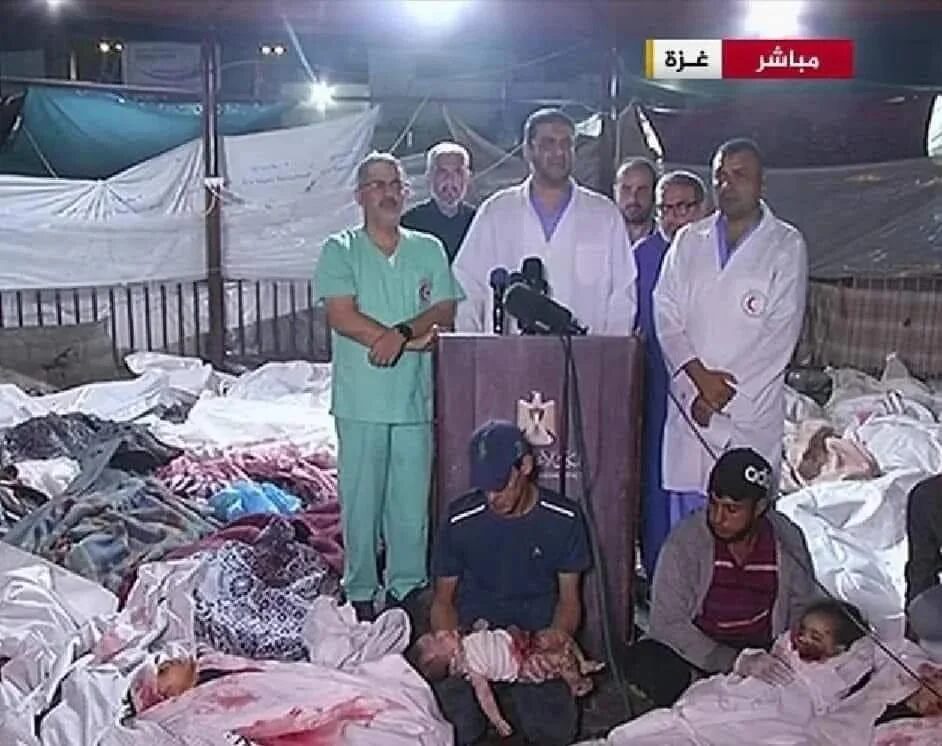
As is the case with all other hospitals in Gaza, al-Ahli hospital had become a refuge for the thousands of people internally displaced in Gaza due to Israel's massive bombing campaign that began on Oct. 7th. On the night of Oct. 17th, hundreds of Palestinian men, women and children had congregated in the courtyard of the hospital (the hospital itself being already full) because they believed it to be a relatively safe haven from Israeli bombs.
Canon Richard Sewell, the dean of St George's College in Jerusalem, told the BBC that about 1,000 displaced people were sheltering in the courtyard when it was hit, and about 600 patients and staff were inside the building.Not only had the IDF already warned this hospital in the three consecutive days before the explosion that it would be attacked, they actually attacked it on Oct. 14th, hitting the cancer ward. Since Oct. 7th, the WHO has reported 59 attacks on healthcare establishments in Gaza City and 137 across the entire territory of the Gaza Strip.
Note also that, in the past week, Israeli political and military elite have publicly stated that they view all Palestinian resistance groups as "literal Nazis" and by implication the Palestinian people as "Nazi sympathizers", and therefore "subhuman" and not entitled to the same rights as "normal" human beings.
Initially, and based on claims by Hamas, Palestinian Islamic Jihad (PIJ) and hospital staff, the media reported that Israel had bombed the hospital, "killing hundreds of people." Within a day however, the IDF claimed that the explosion was in fact a result of a PIJ rocket that "misfired" and hit the area, and provided evidence to "prove" it.
Since then, both the UK's Channel 4 and Al Jazeera (video below) have convincingly debunked this IDF claim, showing that the PIJ rocket in question was fully destroyed by the Iron Dome missile defense system about 7 seconds before the explosion at the hospital, and therefore could not have been responsible for the damage to the courtyard and the deaths of 471 people.
There is also video evidence of the sound of a jet in the air about 2 seconds before the explosion at the hospital.
The Photo Evidence
Below is an image of the crater in the courtyard left by the missile/bomb.
Note the small size of the crater and also the likely direction of the missile/bomb (from the East/North East) based on the scarring pattern to the right of the crater (Westwards). The official Israeli narrative on this event is further discredited by their claim that the "failed PIJ rocket" came from almost the opposite direction, the South West. See here for a forensic analysis suggesting the missile/bomb came from the North East.
The IDF and others had also claimed that it could not have been an Israeli missile/bomb because they leave much bigger craters. Such a 'hot take' however, ignores the fact that there are many different types of bombs in the Israeli arsenal. And some of them have specific purposes that mean they do NOT leave a large crater (more on that in moment).
Next look at these images of the cars that were parked within 5-10 meters of the crater. Note that several of the roofs of the cars are caved in by significant downward pressure. Notice also the damage to the tile roof in the background that appears to have been "ablated" from above rather than from below.
The next image shows tile roofs of buildings situated to the right (West) of the impact crater and the burned cars. The height of the roof of the large building is approximately 8-10 meters. The damage appears to be consistent with the impact of objects moving in a horizontal/downward direction rather than up and outward blast debris from a ground impact that would have caused more damage to the building facade than the roof. In addition, given the small size of the crater, it is unlikely that there was enough 'ejecta' to cause this widespread damage while also killing hundreds of people.
The image below shows significant shrapnel (or projectile) damage to the East of the crater site also, suggesting a 300-degree dispersal.
Below is an overview of the site, with my additions showing the estimated diameter of the immediate blast area or "kill zone", which is about 40-50 meters. Remember, there is no dispute that upwards of 1,000 people were packed into this area on the night of the explosion.
The various Palestinian resistance groups have rockets at their disposal that carry warheads ranging in size from 5kg to 20kg.
Here's an example of 20kgs of explosive 5 meters from the detonation site.
While a standard Palestinian rocket hitting the ground could plausibly have caused the crater and at least some of the shrapnel damage to cars and buildings seen at the site, it is unlikely that it could also have killed 471 people, regardless of how tightly packed together they were, simply because it lacks the explosive power and shrapnel volume to do so.
The Most Likely Explanation
Given the extent of Israel's ongoing surveillance of Gaza, the fact that up to 1,000 people had congregated at that location was very likely known to the IDF command. Certainly, such a large group of people would have been clearly visible to the pilot of a jet that dropped the bomb/missile via his FLIR imaging sensor.
Bombs with airburst setting detonate at a pre-set height above the ground, dispersing either shrapnel or cluster munitions over a wide area. They are designed to be used against "soft targets," i.e. people, rather than buildings. Most of the explosive energy of the bomb does not impact the ground but disperses in the air with the shrapnel.
The video below shows the effects of a US-made mark 83 airbust bomb, and subsequently GMLRS missiles with a M30A1 warhead with airburst fuze, detonating at 10 meters above the ground. Notice how a small part of the explosive energy and probably the tail fin of the missile assembly continues through to the ground, while the large majority of the explosive energy (along with the rest of the missile body and any added cluster munition) is dispersed over a downward circular pattern. The impact on the ground directly in line with the angle of the bomb/missile would be minimal, mirroring the small crater at the hospital courtyard.
In the comparison below between two bombs (one a mark 83 JDAM configuration bomb from Afghanistan, the other from the attack on the al-Ahli hospital), while the sound is the same, the first ejects a large plume of debris into the air because it exploded on impact with the ground. In the 2nd clip from the hospital attack, there is no such plume visible (and no large crater) because it was most likely an airburst bomb, the explosive force and shrapnel from which was absorbed, partly by the cars and buildings in the courtyard, but primarily by the bodies of the hundreds of people who had congregated there.
The most likely explanation then is that an Israeli Air force jet deliberately fired a US-made Mark 83 bomb with JDAM guidance kit and airburst fuze setting on the courtyard of the hospital where up to 1,000 Palestinians were seeking refuge - ironically, from Israeli bombs. The intent was not to target the hospital itself because in that case an airburst bomb would not have been used and the hospital itself would have been hit. In the case of 'bad aim', the crater in the courtyard would be much larger.
The likely intent, instead, was to target the 1,000 people in the courtyard with a bomb that was specifically designed to kill as many 'soft' targets as possible.
The only unusual aspect of this event was the efforts made by the Israeli government and military to deny responsibility. After all, Israel has, to date, had no problem in destroying entire buildings in Gaza with many people inside. Why would they make an exception for the al-Ahli massacre? Was it the unusually large number of civilian deaths, and that they were deliberately targeted? Or was it the fact that the 'optics' of such a bloody massacre using an American plane and an American bomb were particularly bad given that Biden was arriving the very next day? And was it the Biden administration that pushed the Israelis to mount a media offensive, not to apologize, but to deny that they (and therefore the Americans) had anything to do with it?
I suppose we'll never know the finer details. But given the available facts and the overall context in which the massacre occurred, there is little doubt that the massacre at the al-Ahli hospital courtyard has Zionist fingerprints all over it.
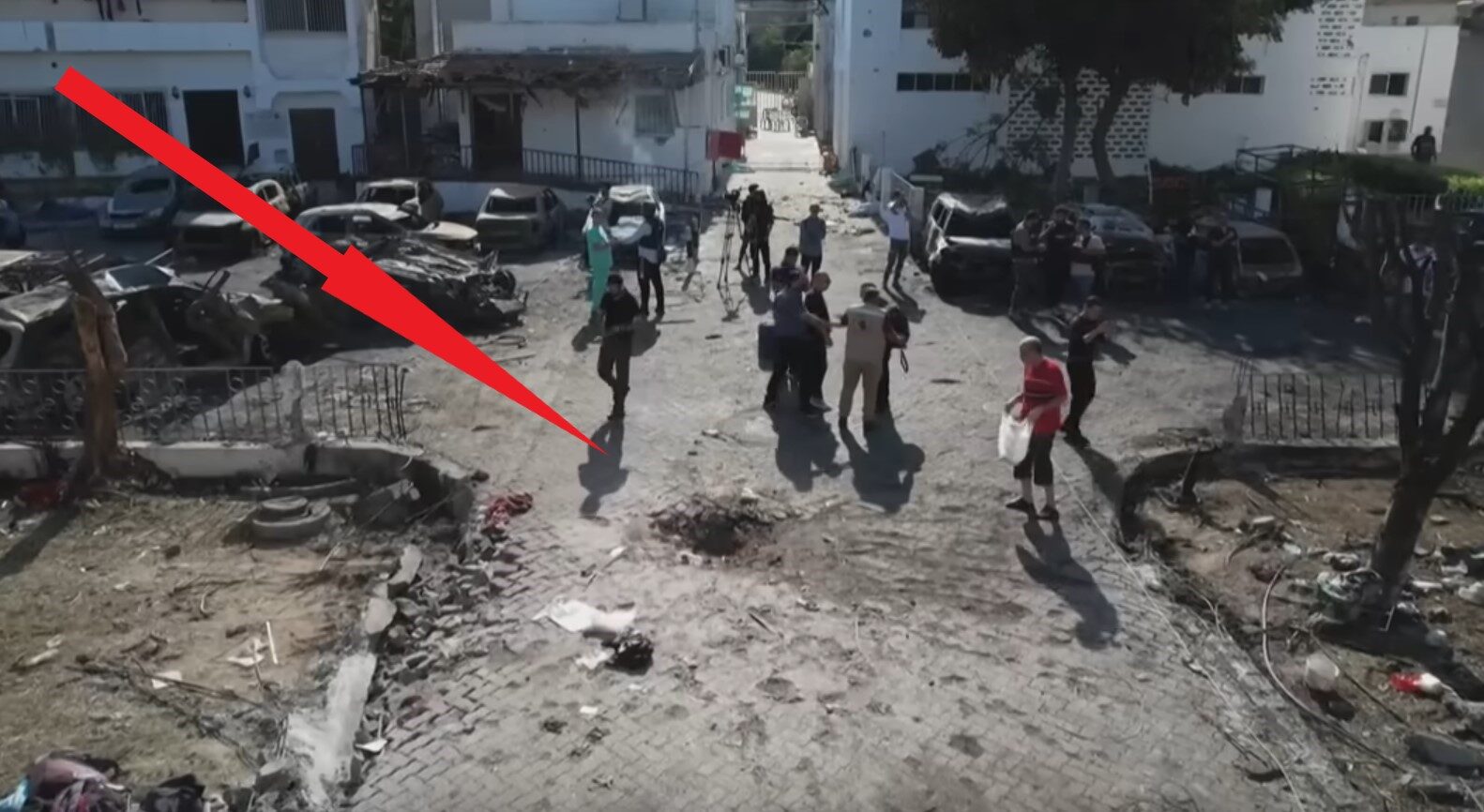
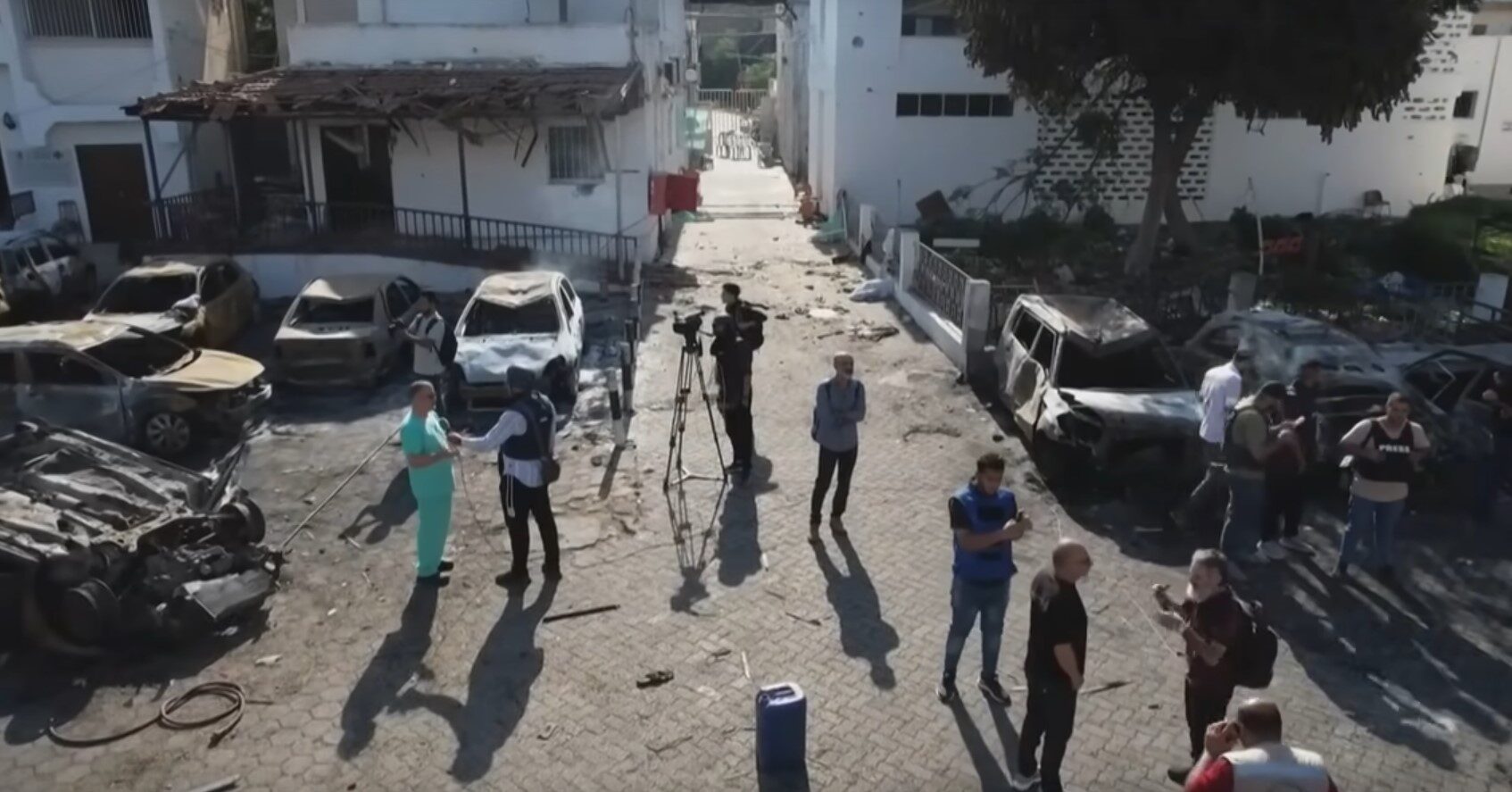
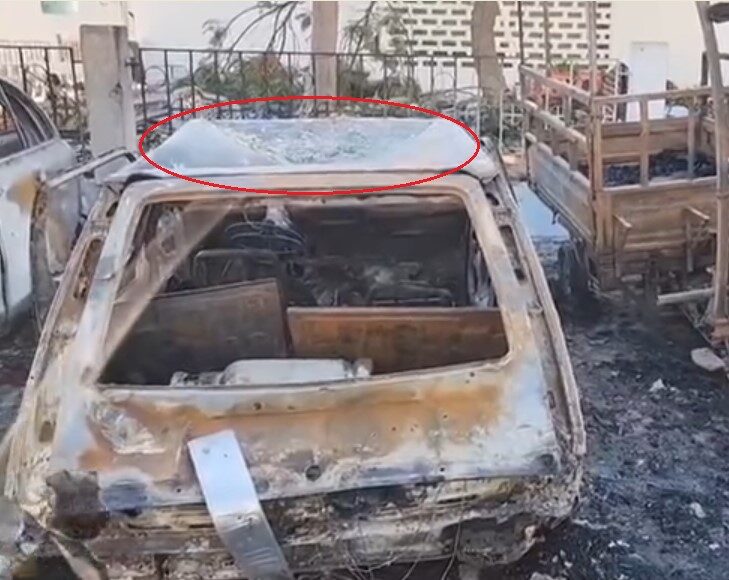
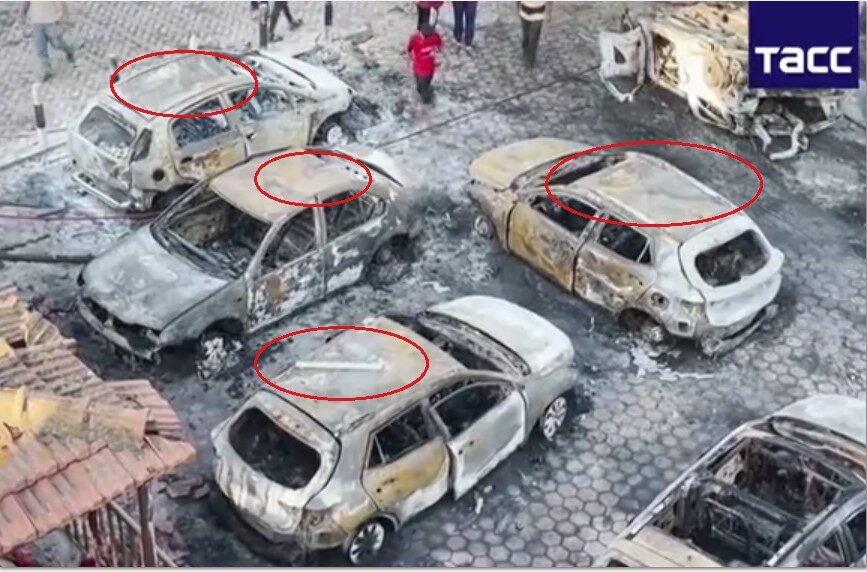
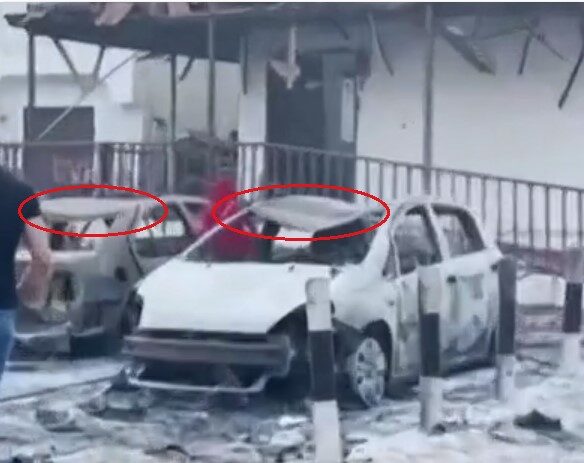
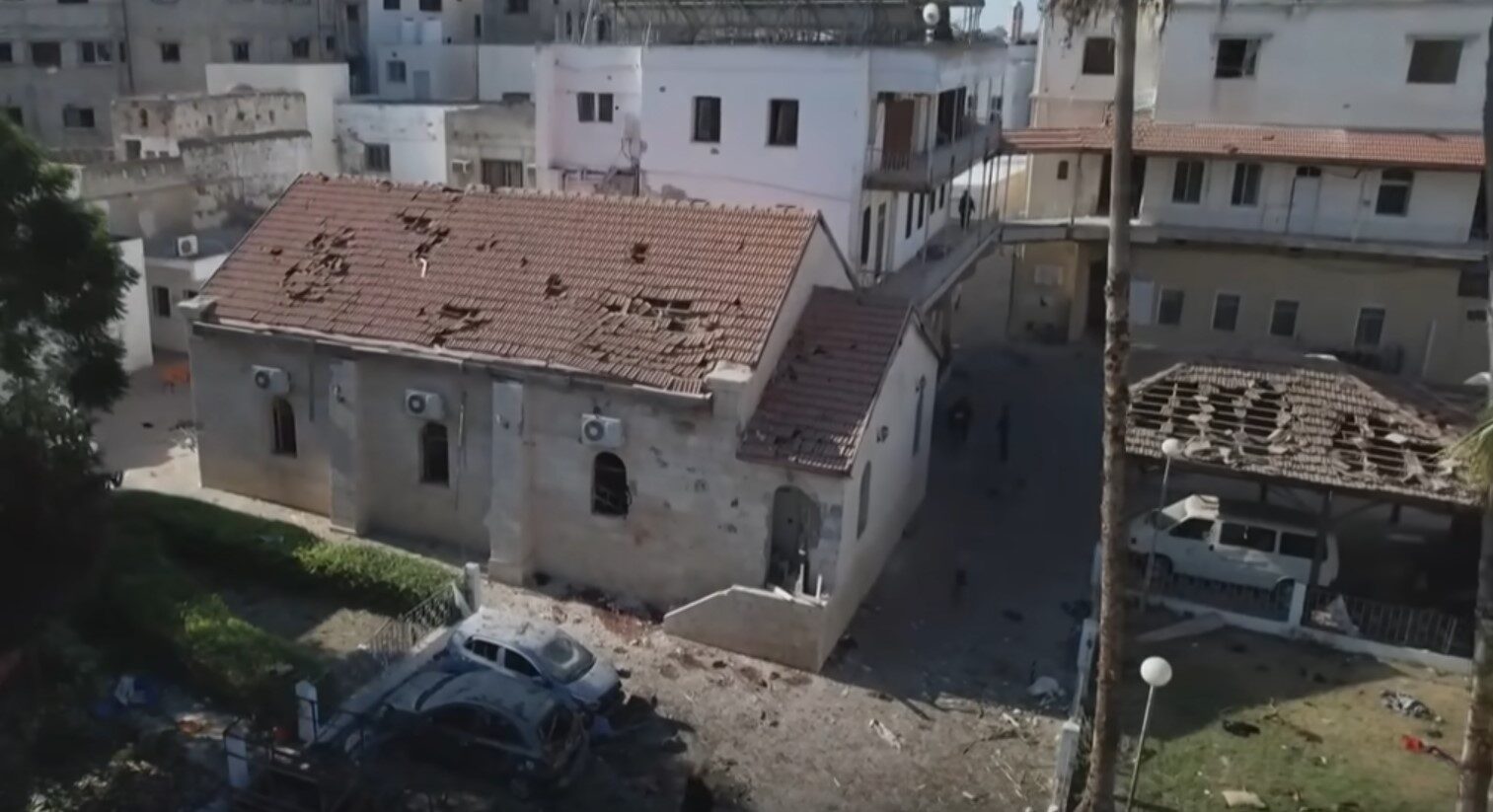
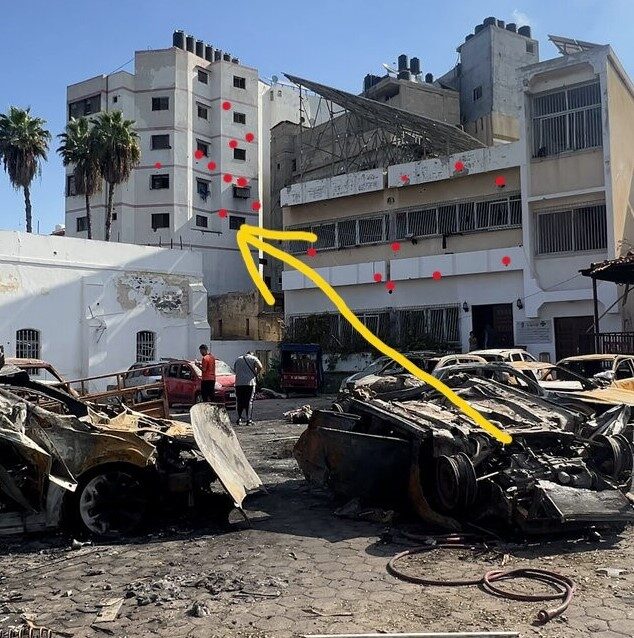
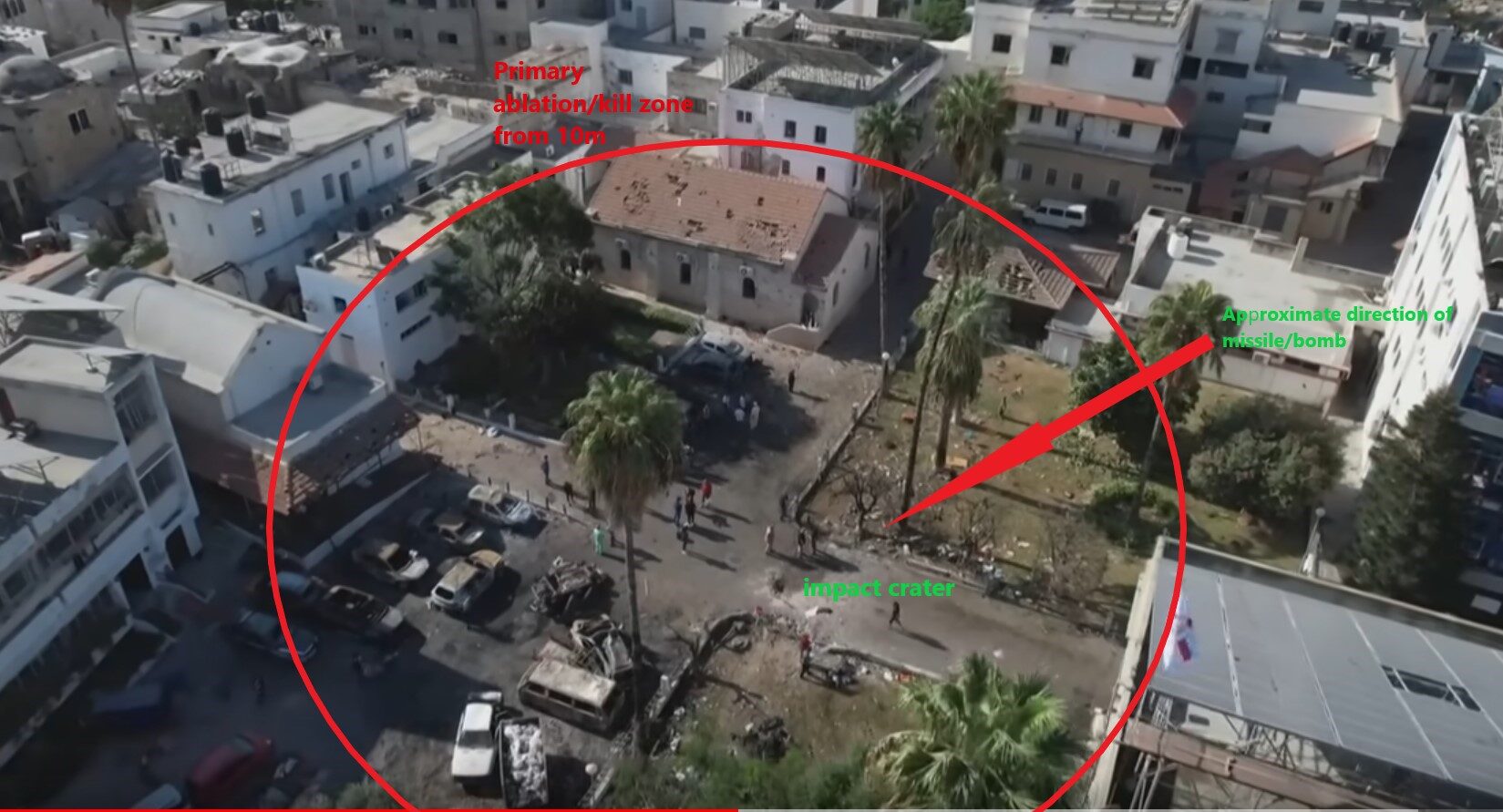



Reader Comments
Some say we have been under for decades....at least 200 years, with control of the money system, finance of corporations and of course medicine nutrition and education.
UK is a two party political progression.
Labour and Conservative (both fund Israel under the political shield of Zionism as "friends of Israel using peoples tax donations)
Benjamin Disraeli was a Jew.
The Jews in London City are joined with Russian Israeli USA ....any country with a central bank (Rothschild a Jew) ...
Possibly, you may have a different perspectaive.
We feel that the Arabs and Jews are cousins in race, suffering similar oppression at the hands of powers stronger than themselves, and by a happy coincidence have been able to take the first step toward the attainment of their national ideals together. We Arabs, especially the educated among us, look with deepest sympathy on the Zionist movement ... We will do our best, in so far as we are concerned, to help them through; we will wish the Jews a most hearty welcome home.[186]
When the letter was tabled at the Shaw Commission in 1929, Rustam Haidar spoke to Faisal in Baghdad and cabled that Faisal had "no recollection that he wrote anything of the sort".[192] In January 1930, Haidar wrote to a newspaper in Baghdad that Faisal: "finds it exceedingly strange that such a matter is attributed to him as he at no time would consider allowing any foreign nation to share in an Arab country".[192] Awni Abd al-Hadi, Faisal's secretary, wrote in his memoirs that he was not aware that a meeting between Frankfurter and Faisal took place and that: "I believe that this letter, assuming that it is authentic, was written by Lawrence, and that Lawrence signed it in English on behalf of Faisal. I believe this letter is part of the false claims made by Chaim Weizmann and Lawrence to lead astray public opinion."[192] According to Allawi, the most likely explanation for the Frankfurter letter is that a meeting took place, a letter was drafted in English by Lawrence, but that its "contents were not entirely made clear to Faisal. He then may or may not have been induced to sign it", since it ran counter to Faisal's other public and private statements at the time.[193] A 1 March interview by Le Matin quoted Faisal as saying:
This feeling of respect for other religions dictates my opinion about Palestine, our neighbor. That the unhappy Jews come to reside there and behave as good citizens of this country, our humanity rejoices given that they are placed under a Muslim or Christian government mandated by The League of Nations. If they want to constitute a state and claim sovereign rights in this region, I foresee very serious dangers. It is to be feared that there will be a conflict between them and the other races.[194][ab]
Referring to his 1922 White Paper, Churchill later wrote that "there is nothing in it to prohibit the ultimate establishment of a Jewish State."[195] And in private, many British officials agreed with the Zionists' interpretation that a state would be established when a Jewish majority was achieved.[196]
When Chaim Weizmann met with Churchill, Lloyd George and Balfour at Balfour's home in London on 21 July 1921, Lloyd George and Balfour assured Weizmann "that by the Declaration they had always meant an eventual Jewish State," according to Weizmann minutes of that meeting.[197] Lloyd George stated in 1937 that it was intended that Palestine would become a Jewish Commonwealth if and when Jews "had become a definite majority of the inhabitants",[ac] and Leo Amery echoed the same position in 1946.[ad] In the UNSCOP report of 1947, the issue of home versus state was subjected to scrutiny arriving at a similar conclusion to that of Lloyd George.[xxiv]
Scope of the national home "in Palestine"
The statement that such a homeland would be found "in Palestine" rather than "of Palestine" was also deliberate.[xxv] The proposed draft of the declaration contained in Rothschild's 12 July letter to Balfour referred to the principle "that Palestine should be reconstituted as the National Home of the Jewish people."[202] In the final text, following Lord Milner's amendment, the word "reconstituted" was removed and the word "that" was replaced with "in".[203][204]
This text thereby avoided committing the entirety of Palestine as the National Home of the Jewish people, resulting in controversy in future years over the intended scope, especially the Revisionist Zionism sector, which claimed entirety of Mandatory Palestine and Emirate of Transjordan as Jewish Homeland[150][203] This was clarified by the 1922 Churchill White Paper, which wrote that "the terms of the declaration referred to do not contemplate that Palestine as a whole should be converted into a Jewish National Home, but that such a Home should be founded 'in Palestine.'"[205]
The declaration did not include any geographical boundaries for Palestine.[206] Following the end of the war, three documents – the declaration, the Hussein-McMahon Correspondence and the Sykes-Picot Agreement – became the basis for the negotiations to set the boundaries of Palestine.[207]
Civil and religious rights of non-Jewish communities in Palestine
"If, however, the strict terms of the Balfour Statement are adhered to ... it can hardly be doubted that the extreme Zionist Program must be greatly modified. For "a national home for the Jewish people" is not equivalent to making Palestine into a Jewish State; nor can the erection of such a Jewish State be accomplished without the gravest trespass upon the "civil and religious rights of existing non-Jewish communities in Palestine." The fact came out repeatedly in the Commission's conference with Jewish representatives, that the Zionists looked forward to a practically complete dispossession of the present non-Jewish inhabitants of Palestine, by various forms of purchase."
Report of the King–Crane Commission, August 1919[208]
interested readers want to know
It's obvious that today's new/media has learned well from the British just how to manipulate the adulterous English language.
Let's just admit zionism is truly Talmudic and Cabalistic in intent. There is no room in their long game for the ancient enemy who ripped up their traditions, namely Jesus Christ, son of God and his followers down through time called Goyim.
The prophecy of Yeshua returning to earth to avenge all those who were slain by the murderers, from Abel, the prophets and Yeshua himself was murdered by these "Jews who say they are Jews but are not Jews but do lie"
Ezekiel 32:6
Isaiah 34:3
Exodus 7:17
Isaiah 34:7
Revelation 14:20
Revelation 16:6
An honest will to want to read it.
Be able to speak or understand English.
Take the time to read it, takes 2mins which isn't that long to know the pretext of what Jews hoped to achieve through Zionism (obviously a bot will struggle with this due to the character placement and charachter limit).
Ponder what has been written as said, explained, when and by whom and you should be then "knowing" of it.
Result.
`~|<>{}[]▪○●□■♤♡♢♧¿¡》《☆⊙°•¤
Strange when the answer was asked but apparently not even acknowledged.....but answered in such a way as to create an illusion of a conversation point following.
Is this black technology? Devised from black budget technology, that normal people throughout the world would be appalled at the destruction and devastation. I am reminded of the destruction of the twin towers and the controversy of the collapse.
This is a destruction against the psyche of normal people, to accept the lies and destruction of part of the human family and hanging on by the grace of God. If it will survive as a Nations State.
Nations with volatile rhetoric and emotions, inciting hate upon hate, for those that look different, a different skin colour, have different beliefs from the native culture...
This conflict has polarized, like no other in the Middle East for decades, with all these weapons flowing around...I dread to think about consequences. And when the dust settles what will be left.
Some, wanting to flow into the loving arms of the beneficent ideology of the WEF.
Ah! the peaceful life, of a structured society, where everyone is mind controlled,
Oh, no, nevermind. He's part of the hybrid warfare being waged against the American people. The pincer manuever between Rothschild central banking and Marxist "oh, we'll need everything run by a large, state-centrallized apparatus" communism. A false dichotomy.
Land is not capital. Install the Land Value Tax of Georgism -- it is the only way to remove the parasite from America painlessly without unnecessary bloodshed. When their Ponzi financial scheme collapses, they will take you to war --see current events?
The soft Marx in place is not yet the hell of totalitarianism realized, like in Russia. I see no lights on the road like Bakunin to guide the socialists (or "anarchists"), except maybe Jackson Hinkle, but I don't know anything about those two. Biden and Bibi would like to move it towards the type of totalitarian nightmare that is Apartheid Palestine-- it is in the cards to come here, too, if the false dialectic schemers have their way.
...
So why is this here? There is no context to extricate America and the West from running these schemes on behalf of their ME Ally, throwing Mark83s and Storm Shadows to their ideological and literal brethren. We're fed bologna about moral war, when government is naked force and nothing else. The American government needs to be stripped down and reined in on spending, and the LVT is the way to do it while maintaining services. Anything else about an essentiality is a desire to keep the system in place that allows a cadre of elites to suckle a free teat, drawing off the productive labor and intellectual property value created in the West, through speculation and war profiteering.
Blah, blah, blah, [/anankanistic rambling] (h/t hkoehli ).
Joe A Heartbreaking Work of Staggering Genius
R.I.P., axel_dunor
His real incarnation is much worse.
bestworst.There you go. Cleaned.
That is the part where you have to enter the door with the words "name game" written on it and Im sorry...I really am, genuinely, but even this dude would be lost in seconds unless he is confident and not fearful of labels being stuck on him, something that in itself might be difficult to navigate on a platform with subscriptions to the emotional arguements they bring and knowing why such labels would even exist in a free society with free speech.
Other than that, the evolution of their strawman/scapegoat abilities within these concepts of "Jihad" "Holywar" etc are a fantastic starting point.
His real incarnation is much worse. A never ending torturer of humanity If one imagines if he and his ilk never existed in our lives.
As a culture and society we have never know or been able to contemplate it for the past 150 years or more, even centuries.
The rest of it goes, 'once divided, keep divided.'
Alas, I think that the so called elites are now at the phase of their need for unbridled power, where those who control the means of production, supply and dispensing of human basic needs, have amassed technology for themselves to live in a world relatively free of human beings. The agenda as I see it, is to rid the world of the mass of humanity, keeping just enough alive to act as slaves, while the controllers make themselves gods. All the real advances, founded by Tesla, Wilhelm Reich, and others marginalised or killed off and their inventions stolen, will be used by the controllers for themselves alone. A golden age for controllers alone... A boot on the face forever on what's left of humanity. This has been the goal all along.
It could be compared to the mythical creatures that walked upon the earth now extinct. In fact, we are now experiencing wildlife extinctions at an alarming rate.
Maybe humanity is the next in line for extinction?
There is speculation that the Earth's magnetic field is changing/diminishing, and that this is what is partially responsible for the widespread outbreak of violence in humans.
I wish you happy days in your created reality and your fantasy. of planet Earth, how you wish you want it to be.
Stengel thing is, our imaged reality, never is reality.
I think the planet will continue to be and will continue to do what it does best. At present, it appears that the planet peoples, part of what it seems top do best. I like characters like George Carlin who jokingly speculated that the Earth made people to make plastic. There wasn't plastic, he said, until we made it. And if we leave as a species, the planet will have plastic for itself. A bit cynical maybe, but I find that somewhat humorous.
As far as I'm concerned, your last sentence is spot on. The older I get and the more I think I know, the more I realize ultimately I know nothing. The senses seem to reflect what the mind projects. So much for perception, warped or otherwise.
Climate change may be the herald of our current period of violence.
The effects of the explosion do correspond to JDAM equipped airburst bomb (or similar) with a pre-fragmented case designed to maximize human casualties. As for finer details, some weapons effects experts think the MK 83 is too large for the damage that occurred. If they are correct, perhaps the smaller Israeli SPICE 250 bomb (not the similarly named missile) was used. We will not know for sure what was actually used unless independent experts have prompt access to the site, and that is unlikely.
The PTB are pushing an escalating conflict to involve Iran.
As people we have clearly not learned a single thing since WW2, because you cannot expect the blind to lead the blind.
As to the weapons used? Let's not fool ourselves..thousands died or are maimed and for almost all of us here on this platform, we likely would agree the perpe-traitors should be placed before a firing squad after they have recieved the same torture they have given.
prather do not associate with any of the shit you just splatter upon your face!! You coward of a sociopath.
Dwoods44
Dwoods44 The pathological and psychopathic driven schizophrenic and obsessive compulsive disordered hyperdimensional infregment that you chose to listen and repeat from your entropy connection of your handlers your egotism and low spirit of a person. To follow such ignorance. Remember the woe and evil manipulators that voice you out of your on hiding place to snivel out a last name upon which you chose with your freewill. This goes with associating my last name with a parasitic psychopathic religion and it's ugly shit ilk!
Secret Societies and Psychological Warfare, page 53
Michael Hoffman II
He is trash.
....here's how to douse it - far and wide..
--
[Link]
"Rabbi Hanan Schlesinger, along with Ali Abu Awwad and Shaul Judelman, cofounded Roots/Shorashim/Judur, a joint Palestinian-Israeli grassroots peacemaking initiative dedicated to understanding nonviolence and transformation".
[Link]
-
[Link]
-
Taghyeer (Change)
[Link]
-
I didn't know wtf was going on..who did....but a lot of it like 9/11 was not making sense...I am not suggesting that most of what has been in the mainstream ....
Of course I was totally shocked..I have been to a lot of Festivals, and no one ever tried to shoot me....putting up a tent...and the size of the tent....it simply was not that big - maybe big enough for 500 yoga artists....So I found every bit of photography I could find.
I seriously wanted to go Marching around London yesterday, but no one I know, except maybe my "Sis"...who came to check me out in the week....is the slightest bit interested...except over 100,000 people..some of whom, very recently saved my life..
[Link]
SOTT Focus:The Underwear Bomber - Crushing Freedom With Phony Arab Terrorism
Strange as it may seem, a couple of weeks ago as I ruminated on Obama's broken promise to bring the troops home, his attempt to out-warmonger the Bush administration and his plummeting popularity,...How many read hebrew and have a clue about what is really in the torah? How many have READ the talmud?
Less than 1% all the jews I have spoken with on the subject, excepting one, ALL, without exception, will say that the word אֱלֹהִים translates as 'god', when it does not. It means "those (plural) who came from the sky", which can easily be construed as "space aliens".
"Those who came from the sky" translates to the comets that fell from it, not space aliens because that would be stupid.
And why would that be stupid? Because we cannot understand how it is possible?
This is not a stable planet system. It goes through both recurring and erratic catastrophes that are frequent in geologic time. We know mankind has been on this planet for at least 300,000 years with the possibility of it being 10x that, but we have little coherent history beyond 3000 yrs and no known structures beyond 14,000 years or so. While Plato and others speak of one previous civilization it is widely regarded as myth.
Posit a civilization that has existed undisturbed for say 3 million years, and consider what they might be capable of.
2. Yes we know comets and asteroids hit the planet today. But a few centuries ago it was a fringe belief. A few centuries before that most of western "civilization" believed that the Sun revolved around the Earth and some were burned at the stake for declaring otherwise. If this "civilization" lasts another few centuries (doubtful) it will view many of todays scientific beliefs as we view medieval ones. Old scientists rarely change their beliefs even when evidence is presented, thus the saying that science advances one death at a time.
Consuming today's wheat products causes me to lose energy, awareness and mental clarity, if continued for several days, I will get very sick. I am not allergic, but for me wheat is a slow poison.
Insofar as I can ascertain grains were first grown to feed livestock and make beer, and only famine caused humans to begin consuming unfermented grains directly.
Also worth mentioning is the fact that since many crops are grown out of season in foreign countries, the pesticide amounts and laws on specific pesticide bans can be side stepped.
I also found out a few years ago that in the UK while it is not applicable to use pesticide chemicals on produce grown by farmers who hold to the "Organic" farming principles, pesticide use is in fact lawful to be used on "Organically grown" crops if the use of them is the last option to save a crop from failing....due to pests, so even organic produce can and will have these chemicals in them. Ive given up eating healthy, for starters I have very low income and have little to no options but to eat what is simply available, Glyphosate products are known powerful sterilizing agents and I read it passes over to next gen, but I never know how much of what I read is BS or bluff as the psychological effect of being powerless is cheaper and less dangerous with similar results in apathy and governments use both angles, poisoning you and claiming they are when in fact they are not (the threat).
Wheat if clean and eaten fresh with the germ intact is amazing!!
I had clean Wheat from my gardens, plots and while travelling in north africa/middle east, its not the Wheat....its the shit they spray onto it, or its mixed with adulterants like tares or poisonous rye grass, read up on that.
I do like healthy food, also think if you can maintain correct diet, excercise and keep optimal health, you should, I just accept some of what I know is bad for my health is hard to avoid now, while eating the finest foods is something I simply cannot achieve easily now, so don't fret over it.
Im glad for you and others who have both the knowledge and the means. I miss baking, wine making, plant breeding etc...
Since humans can't travel to the stars, many scientists say extraterrestrial life can't come here either.
You can't travel faster than the speed of light based on Einsteins theory so the only other way would be using wormholes and you wouldn't have it so the location you landed was in space. It would be on the planet so no aliens will never come thru space to Earth. It's impossible. Facts
If you look at how many breads (including some cakes and snacks) there are you will notice some are made from ingredients other than Wheat, all contain starches to some degree, there are multiple different types of popadoms which are made from peas, chickpeas and different lentils, leguminous seeds, flat breads are made from multi-grains etc....every country has multiple different types of bread, traditional and commercial.
The grist from the mill stone worker was whatever crops the family were successful in bringing to make flour out of, the different techniques for making breads are co-dependent on what specific food material it was, natural whole wheat has more protein in it as does legumes (which were also made into flours).
Bread can be made out of any grass seed provided the milling process can seperate the small grains/berries from chaff, seiving and threshing in specific locations for breeze control was optimal ways of seiving. Bread can be made out of anything with high starch/carbohydrates, crisps from vegetables, flat bread from potato. Supermarkets cash in on the whole "ancient grain" meme, some still grow wild in Africa, goats grass, millet, oat grasses,
I know of no one mortal man or human being who can claim or prove to of seen, let alone travelled, survived or discovered a wormhole, or travelled anywhere close to the speed of light.
Facts bro.
Glyphosate...aka Round Up is the farmers chemical savior...
I thought the farmers and ranchers would be the last bastion of honest healthy living. How wrong I am. As am alternative care doctor I sadly have become very jaded towards the greed to make the almighty dollar and sacrifice your children...
BPA's, endocrine disruptions like Polysorbate 60 and 80, dyes, atrazine on corn, pesticides sprayed in silos holding grains, bleaching, AND THEN THE ELEPHANT IN THE ROOM, GENETIC MODIFICATION through CRISPR technology, so advanced they gave this technological nightmare to humans and called it THE CV19 vaxx.
One could get very depressed about it all.
Add geoengineering of the skies and thus our soils and water and you have a very toxic world.
Do not forget our cellular devices, ear buds, microwaves, hammering our cells.
Humans are amazing. We should all be dead.
God is shaking His head in disbelief I am sure.
If the world were toxic the human race growth would be stunted or dwindling. It's exactly the opposite. This is the best time in history to be alive. Definetly the easiest. People have a tendency to look at the past and think it was somehow better but it wasn't.
The people who are unhappy for any reason with how things are today, are more likely to experience this sense that things must have been better in the past.
People think that today is a very stressful time, and when they were growing up, it was less stressful. The reason for that is because our memories are not faithful. They're not accurate to what things really were like.
Your memories are not accurate.
antideluvians lived 100's of years...FYI
So why only three score and 10 now.
sometimes i wish to be back in blighty just for the history.. sometimes.
Thanks VD6, will check out cyclopian & polygoni
I'm lucky having grown up between 2 castles, warwick [Link] and kenilworth [Link] the very important rollright stones [Link] and Lunt fort [Link]
i've been places and britains' landscape and history is still special.
Ya, my brother tells me its glum and I've no desire to relocate back but I'm home for xmas as I haven't seen my family in 12years!
Cant beat Calvin and hobbs for exploring
BTW all links are for non brit sott-ites
Would love to visit Mull.
Yeah get ready for a shock....12 years, wow, alot has changed in that time.
And when you put that together it's a description of a comet. Comets have orbits of 100's of years. Like Haley's comet. And they die when they get too close to the sun.
That's how you know the antedeluvians were comets not people.
Plato's works have been changed or scrubbed from the internet tho. Egypt doesn't want the mystery to be known.
There's a book from 1882 called Atlantis:the antediluvian world by Ignatius Donnelly and the first chapter in it is Plato's writings on Atlantis which is a spot on description of the Pyramids. Platos says Atlantis existed around 11,000 B.C. which coincides with the Younger Dryas comet strike which is written about in the vulture stone and many other sites around the world. I'll try and find the book online .
Luke 10:18-20
“I saw Satan fall like lightning from heaven"
-
Lightning = bārāq.
Heaven or, a High place = bamah
Obama is said to fulfill one of the Four Horseman of the apocolypse prophecies in Revelations (according to writer Tim Cohen)
[Link]
-
a hellish looking parlour
On a funny note.....I could of said at the time if I had known this, that he was a bit well....backward sometimes.
I find some people have a almost dark aura about them if left in their company for long enough, something I suspect all the music and entertainment must of been shielding almost.
Folk music to me has always come accross a bit "harry potter heathen-esque" never liked it really, not to be a musical snob (my musical tastes have always been pretty crap really) but I find music these days in general just doesnt sit well with me, not sure if its the A=440 tuning thing or just the spirit of satan influencing minds who make music, I like nature sounds mostly, wind rain running water and birdsong and thunder etc. I find the Asmr YT videos are quite freaky, something about all of that just creeps me out totally.
[Link]
-
I know nothing of Asmr, but if it anything like popping bubblewrap, am content to do without it, besides,can't beat Natures natural.
Israel Should Know: “What Thou Sowest, Thou Shall Also Reap” [Link]
There it is 👇🤡💩🎪
The genesis of the current Israeli/Palestine conflict began in 1897 when the First Zionist Congress was held in Switzerland, establishing the World Zionist Movement.
“Although the Balfour Declaration hypocritically suggested that “nothing shall be done which may prejudice the civil and religious rights of existing non-Jewish communities in Palestine;” the complete opposite was done by the settlers.”
Calling them out on their Bravo Sierra charade & chameleons they are is a start.
The statistics speak for themselves. The drones are for surveilance of individuals being persued everywhere on account of who they are (genetics and blood type) who wont conform to "voluntary slavery" going into the new digital system. Its not for catching criminals (the police are criminals as per their training, vetting and moral initiation into the "force").
Drones can be automated to follow specific "smart devices" and AI voices will one day immitate people you already trust and know, ie your family members and closest FB allies. Facts bro.
If you have no debts (financial obligations) and no addictions (sex, gambling, drugs etc), it is virtually impossible for you to become a voluntary slave.
In the book of Revelation, the coming digital system is clearly mentioned on principle of these factors.
Sodom is linked to perversion and vices in the OT, while Egypt is linked to slavery, where Israelites were made to build the infastructure including their own prison. Both being requisites for living in this system, no ifs no buts.
While those who refuse or cannot be made to enter into the system of "perversion and slavery" are to be hunted down (persued/persecuted) and many will die of hunger because they cannot buy or sell and therefore no way to provide for themselves.
The masses of homeless building up in numbers is testament to peoples already reduced capacity to function inside the decaying system, labelled as "workshy" or "mentally ill" they have nothing the system requires and so they already lie in the streets, metaphorically already dead to a life of abundance.
The displaced Palestinians compounds on this already well established trend. Evicted after being physically abused for decades.
Revelation 11:8
...and their dead bodies will lie in the street of the great city that symbolically is called Sodom and Egypt, where their Lord was crucified.
Have you not read about the major leaks of Police names etc take a look online, the implications are huge for individual police and their families.
One of the Leaks coming by way of internet security.
You can fool some of the people all the time but not all the people all the time.
Sea change - new frontier eminent at some point. What does that look like ? Who knows …. Power concedes nothing without a demand.
Cheers
Homeless situation is mostly drug addicts and mentally ill.
Good article on what really happened on Oct 7. Needless to say, nobody was beheaded.
These quotes: "This is not really about celebrating ‘diversity’ but separating people along the lines of gender, religion, ethnicity, and so forth.
It does so by treating society as a collection of separate groups that are dependent upon government-managed responses to diversity.
In this sense, the idea of ‘rights’ has been weaponised and anti-discrimination laws are increasingly used to stifle expression of personal opinion, rather than simply challenge bad behaviour."
What does it mean? Primarily that "racism" and "trans-gender" rights are more important than "religious" rights. So a Christian bakery can be sued for not making a "wedding" cake for a gay couple.
This is the climate narrative . Eat bugs, don't drive cars, get rid of cows. [Link]
Enjoy your various self fabricated realities created from the lying psycho paths.
People tend to accept the version of reality with which they are presented.
World’s a rigged stage.
provide happier future: knowledge and awareness
SOTT Focus:The Golden Age, Psychopathy and the Sixth Extinction
When asked what I would like to write about for this issue of the Dot Connector, the first thing that came out of my mouth was "The Golden Age and how we got from there to where we are now and...He gives documentation of research institutes, DARPA, and military.
Here is a link to Abercrombie and FItch: [Link]
That word is up there with conspiracy theorist imho.
Max Igan said the track of the "hurricane" was where his house is in Acapulco. Excellent interview.
To Dwoods44 My apology for accusing you of sociopathic intentions or being one. I do not know you. My reaction and thoughtless accusation.
I suppose it is a step above the terrestrial fear porn on msm!
Quote: "Is Israel a modern, secular liberal Democracy™ in the mold of the West (“the only democracy in the Middle East,” as Americans are constantly reminded, in intended juxtaposition to the unwashed hordes of Islamics surrounding it) or is it a theocratic ethnostate as the “home of the Jews”?
The answer depends on which narrative is most advantageous to Israeli interests at any given time."